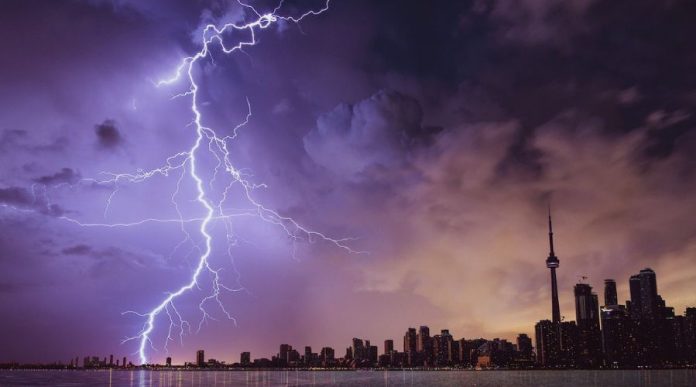As the name implies, “thunderstorm asthma” refers to asthma attacks that occur during or after a thunderstorm.1,2 These attacks can be fatal if not managed.
In regions with high numbers of thunderstorms, there can be increases of the attacks that put a strain on local hospitals. One example is the thunderstorm asthma attacks that occurred in Melbourne, Australia in 2016.1,3,4 During this event, emergency hospital visits were up four times the regular amount due to acute respiratory distress.1,5
Causes of thunderstorm asthma
While the exact defining factors and classifications of asthma are currently under review, asthma can be generalized as a respiratory condition that causes inflammation and irritation of the airways.1,6 Asthma can be triggered by sensitivities to particles in one’s environment, genetic makeup, or lifestyle.1 Asthma symptoms include coughing, breathlessness, and wheezing.1
Allergies
A common cause of asthma attacks is seasonal allergies with pollen being a common triggering culprit. Thunderstorms can cause pollen grains to burst open and circulate in the air which is one reason behind the term “thunderstorm asthma”.1 These pollen bits can travel into the lower airway and trigger asthma symptoms.1
People with a pollen sensitivity may be at a greater risk for experiencing thunderstorm asthma (TA).2 Oddly enough, people without a prior allergy can also have a TA attack.
A review study looked at the relationship between pollen and thunderstorm asthma incidences.2 Twenty study results showed higher levels of pollen in the air before a thunderstorm could contribute to higher incidences of TA.2
Researchers also noted that different types of pollen could contribute to thunderstorm asthma, including grass, wood, weed, and tree pollen.2
Fungi
Studies examined environmental health at the time of thunderstorm asthma attacks and found that the presence of pollen didn’t explain the prevalence of TA.2,7, What these researchers found was that another contributor may be fungi. Fungi release tiny particles in the air called spores. Certain fungi releasing spores when the air is damp —- like during a thunderstorm.2 Some studies found unusually high amounts of fungi spores in the air before, during, and after thunderstorms.2
However, another study didn’t find an association between fungi spores in the air and thunderstorm asthma.2 These conflicting research results call for a need to study fungi as a cause specifically.
More research is needed
It’s essential to note that research into thunderstorm asthma is still limited. Other environmental health factors, such as temperature, could also impact pollen as a cause.2 Understanding how pollen affects air quality could predict the high-risk times for thunderstorm asthma, helping to guide public health strategies to protect the vulnerable.2
References
- Dharmage, SC, Perret, JL, Custovic A. Epidemiology of asthma in children and adults. Frontiers in Pediatrics. 2019;7:246. https://www.frontiersin.org/articles/10.3389/fped.2019.00246/full.
- Idrose NS et al. A systemic review of the roles of grass pollen and fungi in thunderstorm asthma. Environmental Research. 2020;181:108911. doi:10.1016/j.envres.2019.108911.
- Elliot AJ. The impact of thunderstorm asthma on emergency department attendances across London during July 2013. Emerg Med J. 2014;31(8):675-8. doi: 10.1136/emermed-2013-203122.
- Davidson AC, Emberlin J, Cook AD, Venables KM. A major outbreak of asthma associated with a thunderstorm: experience of accident and emergency departments and patients’ characteristics. Thames Regions Accident and Emergency Trainees Association. BMJ. 1996;312(7031):601-4. https://doi.org/10.1136/bmj.312.7031.601.
- Andrew E. Stormy weather: a retrospective analysis of demand for emergency medical services during epidemic thunderstorm asthma. BMJ. 2017;359:j5636. https://doi.org/10.1136/bmj.j5636 .
- Eder W, Ege MJ, von Mutius E. The asthma epidemic. N Engl J Med. 2006;355(21):2226–35. doi: 10.1056/NEJMra054308.
- Anderson W, Prescott GJ, Packham S, Mullins J, Brookes M, Seaton A. Asthma admissions and thunderstorms: a study of pollen, fungal spores, rainfall, and ozone. QJM: Int. J. Med. 2001;94(8):429-433. doi: 10.1093/qjmed/94.8.429.
- https://www.frontiersin.org/articles/10.3389/fped.2019.00246/full



